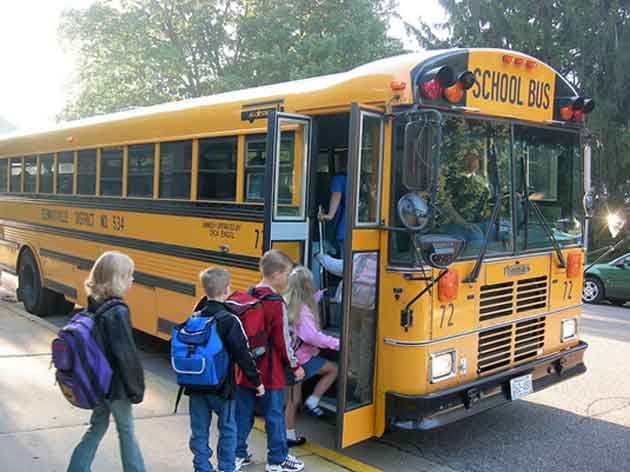Everyone is worried about robots. Elon Musk fears they will kill us all if we give them both deadly weapons and autonomy.
He certainly has a point, but the non-lethal scenarios are no picnic either. Robots are already taking over human jobs at a rapid pace. Any work involving predictable, repetitive activities is vulnerable.
Worse, artificial intelligence (AI) systems threaten even “knowledge worker” jobs now.
This is a troubling combination.
What happens when those two get together?
Answer: the problem grows exponentially. To see how, consider the humble school bus.

Image: Ty Hatch via Flickr
Fewer Miles = Fewer Drivers
There’s a classic math exercise called the Traveling Salesman Problem. The goal: find the shortest path through a series of cities before getting back to where you started.
Sounds simple, but it’s maddeningly complex. Even a short itinerary can have millions of possible routes. Finding the fastest one is hard.
Local school officials in Boston recently realized that this problem was costing them big money: to be precise, a whopping $120 million a year to transport students. Looking to save money, the school system offered a $15,000 prize to whoever could figure out the most efficient bus route map.
Two doctoral students at nearby MIT won the contest. The algorithm they designed eliminated 75 bus routes while still delivering all the students. It will save the school system $5 million a year—a whale of a return on $15,000 invested.
Part of that windfall comes from reducing bus driver positions. The new scheme saves a million bus miles per year, and fewer miles means fewer drivers.
Note how this works. Boston doesn’t need fancy new self-driving buses to cut bus driver jobs. The routing algorithm doesn’t just replace jobs; it eliminates them. Having done so in Boston, it can now do the same in other places.











Leave A Comment